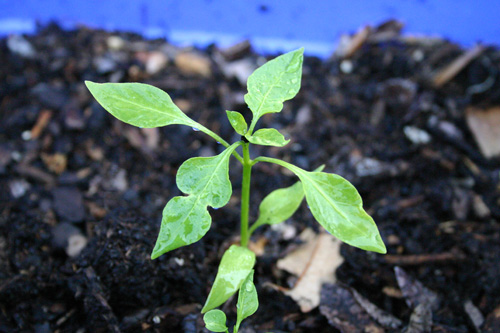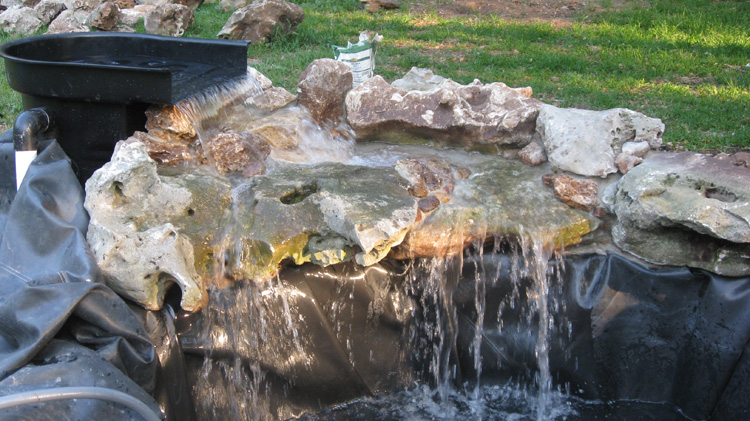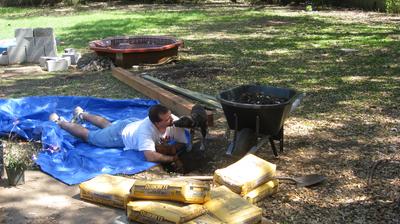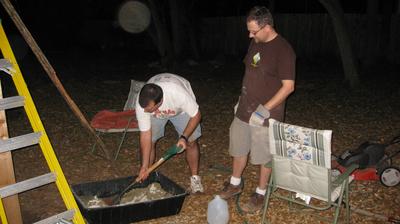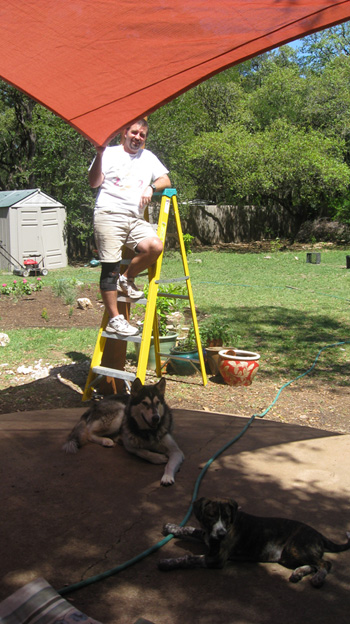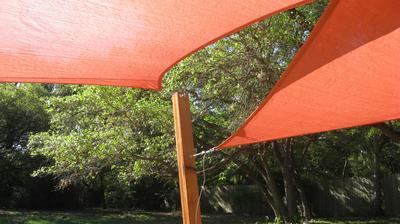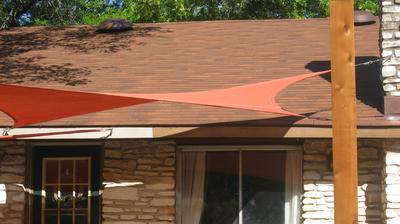The butterfly garden is growing like crazy. New blooms appear daily, including lovely Purple Coneflowers and Zinnias, and there is soon to be an open bud on one of the Flame Acanthus. The Winecups that once attempted to take over Earth, however, have finally died back with the oncoming Texas heat.
After wanting soaker hoses for a long time, I finally purchased several for the butterfly garden and other areas. The butterfly garden alone took four, but already the plants are happily growing faster in response. I’m in the process of covering the hoses in mulch, at least until a pelting rainstorm exposes them again. No complaints here — I’ll take the rain anytime!
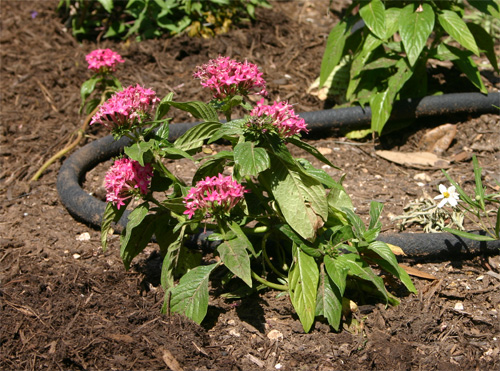
This Zexmenia (Wedelia texana) really stands out near the Blackfoot daisies (Melampodium leucanthum).
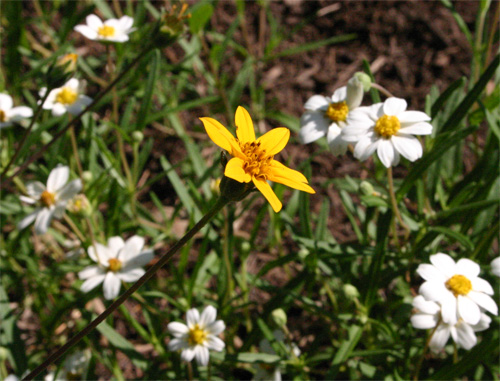
One of the fall-planted drought-tolerant Society Garlics (Tulbaghia violacea) has its first bloom, which means I must have done something right. What a beautiful lavender color.
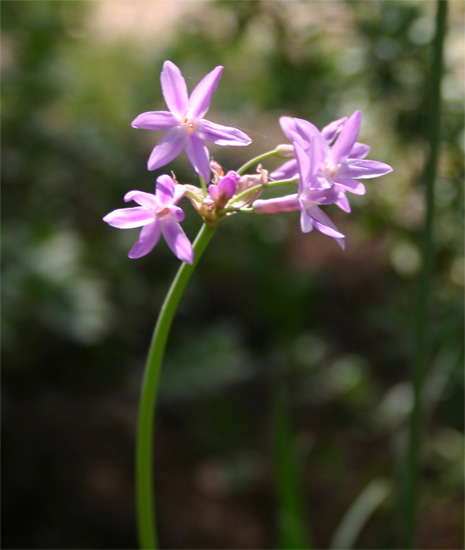
The Spineless Prickly Pear Cactus (Opuntia ellisiana) seems to love our old heavy soil — it has already doubled in size since I planted it this spring. Maybe I exaggerate, but it certainly is bigger.
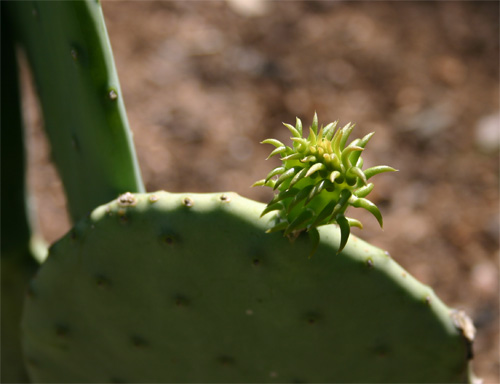
I don’t know the name of the insect below, or whether it is friend or foe, but it was quite fond of this young Purple Coneflower this morning. (Edit: It appears to be a Longhorn Beetle, genus Strangalia. Larvae bore rotting wood, while adults eat nectar and pollen.).
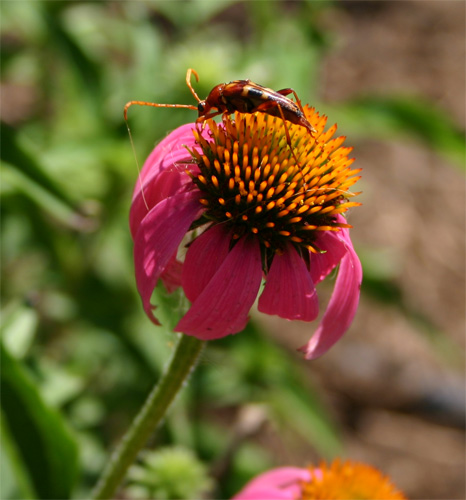
But nearby I did find definite foes. My Zinnia leaves have been getting eaten up a bit — upon closer look, there are several baby grasshoppers feasting away. Sure, they might look all cute and stuff UNTIL THEY EAT YOUR PLANTS! I’m worried about the grasshoppers — as an organic gardener I see them as difficult to get rid of. Time to do some research!

But still, the zinnias are stunning. Two blooms so far. The other ones need to catch up!
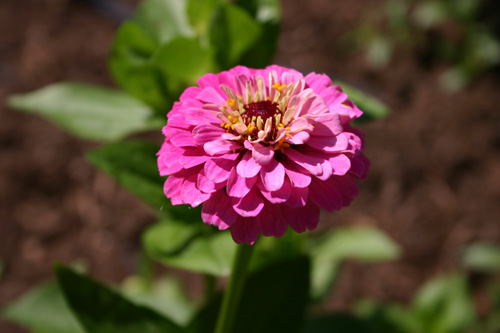
The pond progresses, and I’ve begun planning the plants for inside and outside. The inside is easy — I have a few plants from a friend in Houston (thank you, Kim!), and I’ve chosen a few others for inside the filter falls and in the pond. But the outside is the real challenge — what I plant will help turn this “volcano-like” pond into a beautiful limestone pond to admire and enjoy all the more.
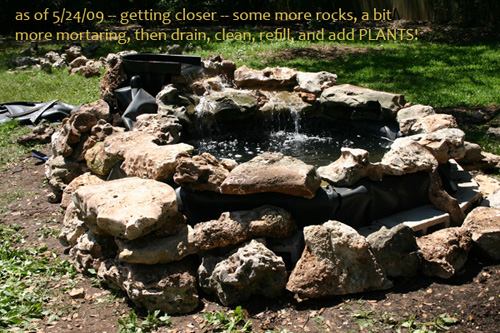 The pond is attracting wildlife already — there has been a hawk hanging out near the backyard the past two days, more dragonflies are zipping by, and I saw a toad hopping along the ground near the pond. The problem with wild creatures is they don’t want to stick around while you go get your camera!
The pond is attracting wildlife already — there has been a hawk hanging out near the backyard the past two days, more dragonflies are zipping by, and I saw a toad hopping along the ground near the pond. The problem with wild creatures is they don’t want to stick around while you go get your camera!
We got our composter a few weeks back, finally. After much research online, I selected the Tumbleweed composter for its easy turning. I chose the “prettier” green one, thinking that I didn’t need the black one for heat absorption, given that we live in Texas. It’s nice to have a place to put our green food bits other than in the garbage. My big complaint about the composter, though, is that it is not made of recycled materials, for the most part. I seriously considered switching to another composter just for the sake of using recycled materials, but I decided that I was more likely to appreciate and use Tumbleweed’s design. I do hope they will revise their product at some point, or offer an alternative. It’s possible that over time the recycled composter will break down sooner (not meaning long-term decomposition) — I’m not sure.
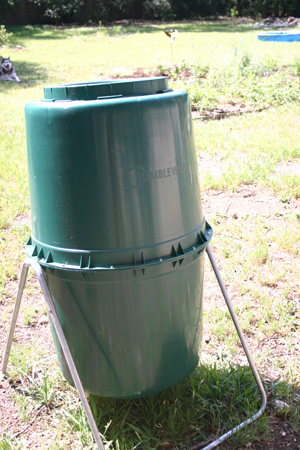
When I planted this Texas Esperanza (Tecoma stans), rainstorms threatened to drown it. Apparently it liked it, and it’s thriving in its little corner by the fireplace wall.
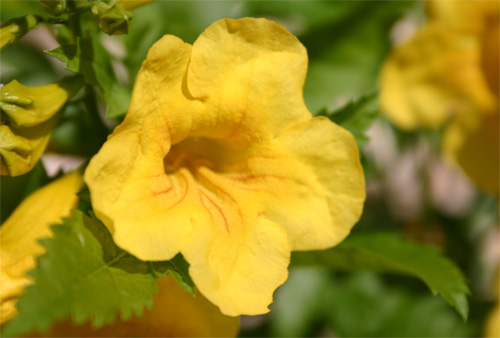
As I take close-ups of the pretty blooms in my garden, I’ve become quite aware of how much dog hair floats about my yard. Some people have to pull up weeds. I have to pull up weeds AND dog hair in my garden. Here’s Gregg’s Mistflower (Conoclinium greggii), complete with dog hair.
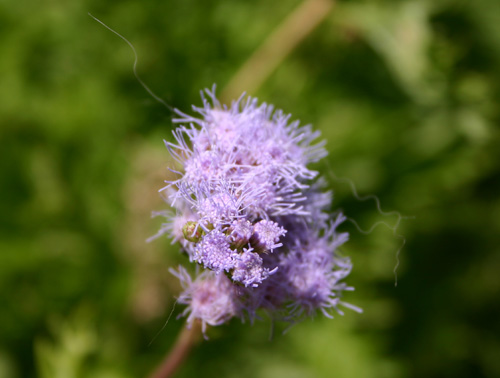
Ah well, at least the outside of our house is consistent with the inside!
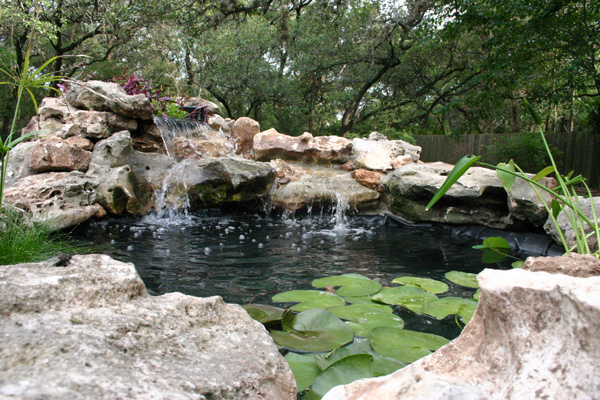 But we are thrilled — the pond looks so different with the plants. View the latest details on the pond contruction here.
But we are thrilled — the pond looks so different with the plants. View the latest details on the pond contruction here.